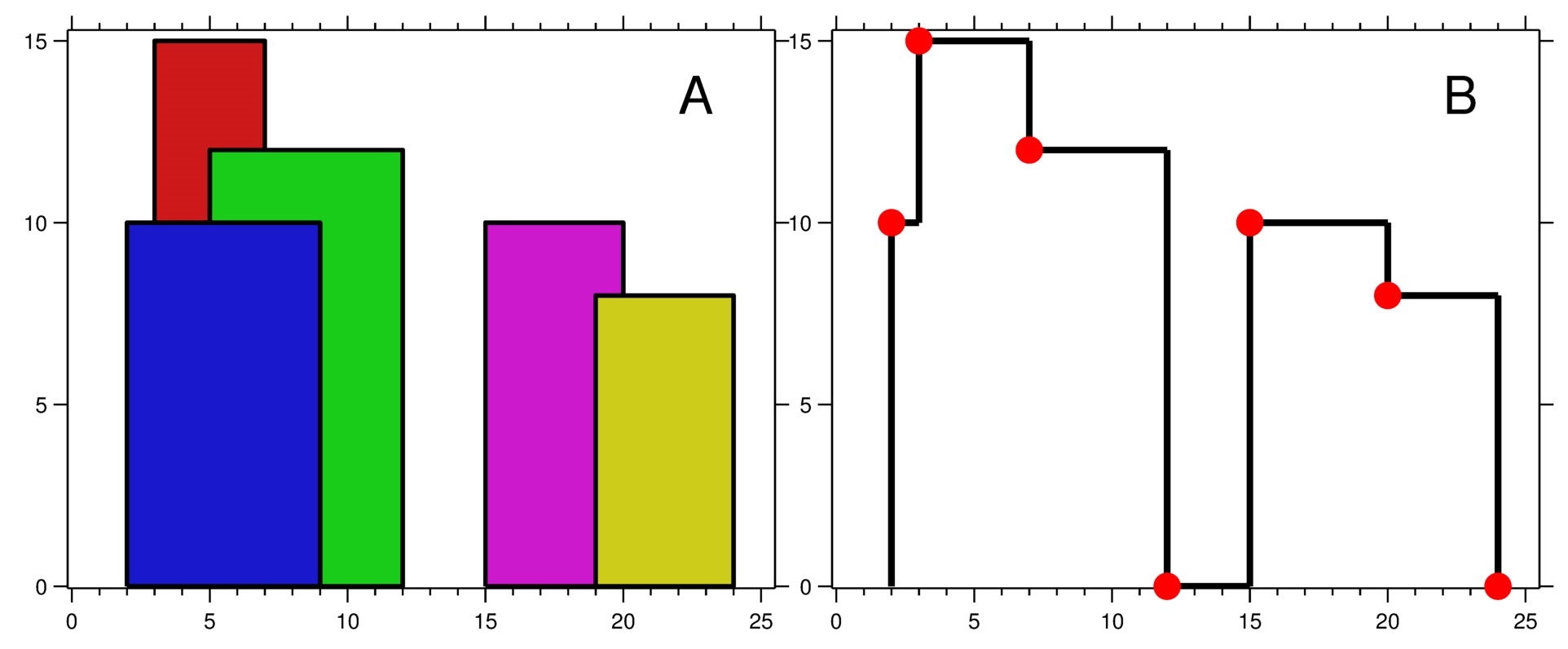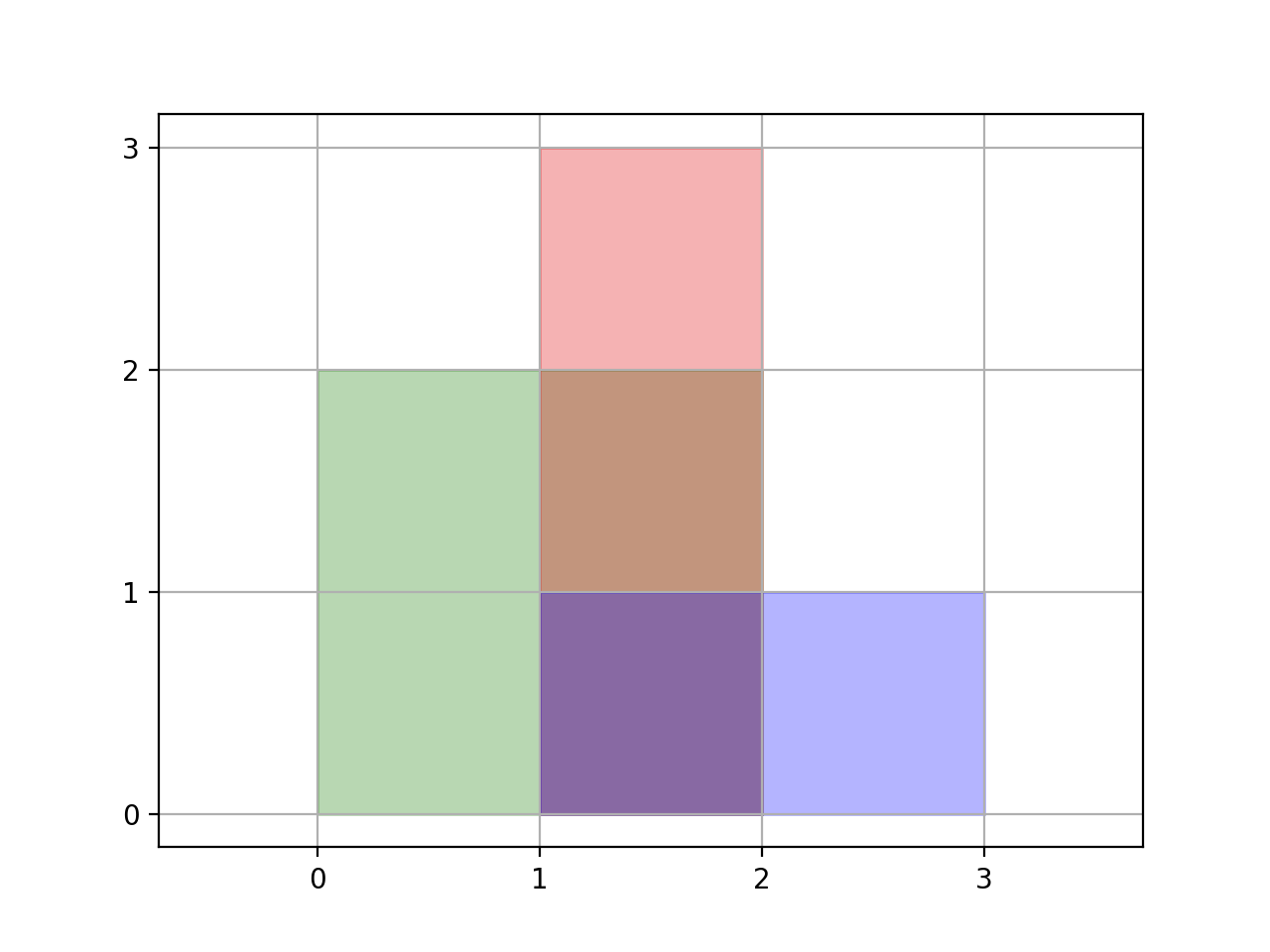18. Segment Tree
Theory
Problems
Problem 1: Range Sum Query - Mutable (Leetcode:307)
Problem Statement
Given an integer array nums, handle multiple queries of the following types:
- Update the value of an element in
nums. - Calculate the sum of the elements of
numsbetween indicesleftandrightinclusive whereleft <= right.
Implement the NumArray class:
NumArray(int[] nums)Initializes the object with the integer arraynums.void update(int index, int val)Updates the value ofnums[index]to beval.int sumRange(int left, int right)Returns the sum of the elements ofnumsbetween indicesleftandrightinclusive (i.e.nums[left] + nums[left + 1] + ... + nums[right]).
Example 1:
Input
["NumArray", "sumRange", "update", "sumRange"]
[[[1, 3, 5]], [0, 2], [1, 2], [0, 2]]
Output
[null, 9, null, 8]Explanation
NumArray numArray = new NumArray([1, 3, 5]);
numArray.sumRange(0, 2); // return 1 + 3 + 5 = 9
numArray.update(1, 2); // nums = [1, 2, 5]
numArray.sumRange(0, 2); // return 1 + 2 + 5 = 8
Constraints:
1 <= nums.length <= 3 * 104-100 <= nums[i] <= 1000 <= index < nums.length-100 <= val <= 1000 <= left <= right < nums.length- At most
3 * 104calls will be made toupdateandsumRange.
Problem 2: Range Sum Query - Immutable (Leetcode:303)
Problem Statement
Given an integer array nums, handle multiple queries of the following type:
- Calculate the sum of the elements of
numsbetween indicesleftandrightinclusive whereleft <= right.
Implement the NumArray class:
NumArray(int[] nums)Initializes the object with the integer arraynums.int sumRange(int left, int right)Returns the sum of the elements ofnumsbetween indicesleftandrightinclusive (i.e.nums[left] + nums[left + 1] + ... + nums[right]).
Example 1:
Input
["NumArray", "sumRange", "sumRange", "sumRange"]
[[[-2, 0, 3, -5, 2, -1]], [0, 2], [2, 5], [0, 5]]
Output
[null, 1, -1, -3]Explanation
NumArray numArray = new NumArray([-2, 0, 3, -5, 2, -1]);
numArray.sumRange(0, 2); // return (-2) + 0 + 3 = 1
numArray.sumRange(2, 5); // return 3 + (-5) + 2 + (-1) = -1
numArray.sumRange(0, 5); // return (-2) + 0 + 3 + (-5) + 2 + (-1) = -3
Constraints:
1 <= nums.length <= 104-105 <= nums[i] <= 1050 <= left <= right < nums.length- At most
104calls will be made tosumRange.
Problem 3: Count of Smaller Numbers After Self (Leetcode:315)
Problem Statement
Given an integer array nums, return an integer array counts where counts[i] is the number of smaller elements to the right of nums[i].
Example 1:
Input: nums = [5,2,6,1]
Output: [2,1,1,0]
Explanation:
To the right of 5 there are 2 smaller elements (2 and 1).
To the right of 2 there is only 1 smaller element (1).
To the right of 6 there is 1 smaller element (1).
To the right of 1 there is 0 smaller element.
Example 2:
Input: nums = [-1]
Output: [0]
Example 3:
Input: nums = [-1,-1]
Output: [0,0]
Constraints:
1 <= nums.length <= 105-104 <= nums[i] <= 104
Problem 4: The Skyline Problem (Leetcode:218)
Problem Statement
A city's skyline is the outer contour of the silhouette formed by all the buildings in that city when viewed from a distance. Given the locations and heights of all the buildings, return the skyline formed by these buildings collectively.
The geometric information of each building is given in the array buildings where buildings[i] = [lefti, righti, heighti]:
leftiis the x coordinate of the left edge of theithbuilding.rightiis the x coordinate of the right edge of theithbuilding.heightiis the height of theithbuilding.
You may assume all buildings are perfect rectangles grounded on an absolutely flat surface at height 0.
The skyline should be represented as a list of "key points" sorted by their x-coordinate in the form [[x1,y1],[x2,y2],...]. Each key point is the left endpoint of some horizontal segment in the skyline except the last point in the list, which always has a y-coordinate 0 and is used to mark the skyline's termination where the rightmost building ends. Any ground between the leftmost and rightmost buildings should be part of the skyline's contour.
Note: There must be no consecutive horizontal lines of equal height in the output skyline. For instance, [...,[2 3],[4 5],[7 5],[11 5],[12 7],...] is not acceptable; the three lines of height 5 should be merged into one in the final output as such: [...,[2 3],[4 5],[12 7],...]
Example 1:
Input: buildings = [[2,9,10],[3,7,15],[5,12,12],[15,20,10],[19,24,8]]
Output: [[2,10],[3,15],[7,12],[12,0],[15,10],[20,8],[24,0]]
Explanation:
Figure A shows the buildings of the input.
Figure B shows the skyline formed by those buildings. The red points in figure B represent the key points in the output list.
Example 2:
Input: buildings = [[0,2,3],[2,5,3]]
Output: [[0,3],[5,0]]
Constraints:
1 <= buildings.length <= 1040 <= lefti < righti <= 231 - 11 <= heighti <= 231 - 1buildingsis sorted byleftiin non-decreasing order.
Problem 5: Queue Reconstruction by Height (Leetcode:406)
Problem Statement
You are given an array of people, people, which are the attributes of some people in a queue (not necessarily in order). Each people[i] = [hi, ki] represents the ith person of height hi with exactly ki other people in front who have a height greater than or equal to hi.
Reconstruct and return the queue that is represented by the input array people. The returned queue should be formatted as an array queue, where queue[j] = [hj, kj] is the attributes of the jth person in the queue (queue[0] is the person at the front of the queue).
Example 1:
Input: people = [[7,0],[4,4],[7,1],[5,0],[6,1],[5,2]]
Output: [[5,0],[7,0],[5,2],[6,1],[4,4],[7,1]]
Explanation:
Person 0 has height 5 with no other people taller or the same height in front.
Person 1 has height 7 with no other people taller or the same height in front.
Person 2 has height 5 with two persons taller or the same height in front, which is person 0 and 1.
Person 3 has height 6 with one person taller or the same height in front, which is person 1.
Person 4 has height 4 with four people taller or the same height in front, which are people 0, 1, 2, and 3.
Person 5 has height 7 with one person taller or the same height in front, which is person 1.
Hence [[5,0],[7,0],[5,2],[6,1],[4,4],[7,1]] is the reconstructed queue.
Example 2:
Input: people = [[6,0],[5,0],[4,0],[3,2],[2,2],[1,4]]
Output: [[4,0],[5,0],[2,2],[3,2],[1,4],[6,0]]
Constraints:
1 <= people.length <= 20000 <= hi <= 1060 <= ki < people.length- It is guaranteed that the queue can be reconstructed.
Problem 6: Rectangle Area II (Leetcode:850)
Problem Statement
You are given a 2D array of axis-aligned rectangles. Each rectangle[i] = [xi1, yi1, xi2, yi2] denotes the ith rectangle where (xi1, yi1) are the coordinates of the bottom-left corner, and (xi2, yi2) are the coordinates of the top-right corner.
Calculate the total area covered by all rectangles in the plane. Any area covered by two or more rectangles should only be counted once.
Return the total area. Since the answer may be too large, return it modulo** 109 + 7.
Example 1:
Input: rectangles = [[0,0,2,2],[1,0,2,3],[1,0,3,1]]
Output: 6
Explanation: A total area of 6 is covered by all three rectangles, as illustrated in the picture.
From (1,1) to (2,2), the green and red rectangles overlap.
From (1,0) to (2,3), all three rectangles overlap.
Example 2:
Input: rectangles = [[0,0,1000000000,1000000000]]
Output: 49
Explanation: The answer is 1018 modulo (109 + 7), which is 49.
Constraints:
1 <= rectangles.length <= 200rectanges[i].length == 40 <= xi1, yi1, xi2, yi2 <= 109xi1 <= xi2yi1 <= yi2- All rectangles have non zero area.
Problem 7: Fancy Sequence (Leetcode:1622)
Problem Statement
Write an API that generates fancy sequences using the append, addAll, and multAll operations.
Implement the Fancy class:
Fancy()Initializes the object with an empty sequence.void append(val)Appends an integervalto the end of the sequence.void addAll(inc)Increments all existing values in the sequence by an integerinc.void multAll(m)Multiplies all existing values in the sequence by an integerm.int getIndex(idx)Gets the current value at indexidx(0-indexed) of the sequence modulo109 + 7. If the index is greater or equal than the length of the sequence, return-1.
Example 1:
Input
["Fancy", "append", "addAll", "append", "multAll", "getIndex", "addAll", "append", "multAll", "getIndex", "getIndex", "getIndex"]
[[], [2], [3], [7], [2], [0], [3], [10], [2], [0], [1], [2]]
Output
[null, null, null, null, null, 10, null, null, null, 26, 34, 20]Explanation
Fancy fancy = new Fancy();
fancy.append(2); // fancy sequence: [2]
fancy.addAll(3); // fancy sequence: [2+3] -> [5]
fancy.append(7); // fancy sequence: [5, 7]
fancy.multAll(2); // fancy sequence: [52, 72] -> [10, 14]
fancy.getIndex(0); // return 10
fancy.addAll(3); // fancy sequence: [10+3, 14+3] -> [13, 17]
fancy.append(10); // fancy sequence: [13, 17, 10]
fancy.multAll(2); // fancy sequence: [132, 172, 10*2] -> [26, 34, 20]
fancy.getIndex(0); // return 26
fancy.getIndex(1); // return 34
fancy.getIndex(2); // return 20
Constraints:
1 <= val, inc, m <= 1000 <= idx <= 105- At most
105calls total will be made toappend,addAll,multAll, andgetIndex.

